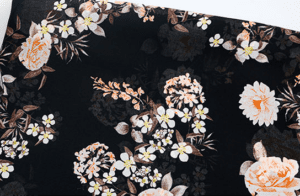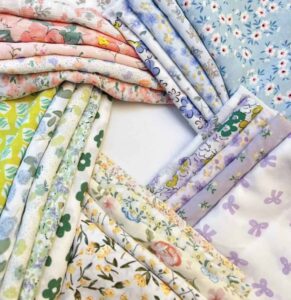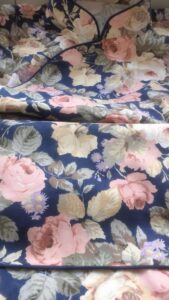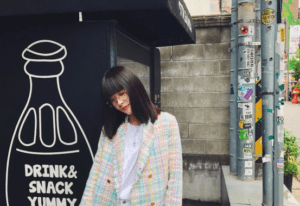Difference between offline and online design planning?
Offline (retail, brand) design planning
1, using offline store sales data to get information about consumer groups.
2, the need for seasonal theme stories.
3, emphasizing the sense of commodity combination series.
4, the terminal VMD shaping rich, pay great attention to the terminal store display.
5, reverse category structure and quantity planning with terminal stores.
6, pay great attention to the seasonal wave of the overall and series combination of goods.
7, the setting of the price band needs to consider the product cost and brand added value.

Online (e-commerce) design planning
1, the use of cloud-based big data, accurate information about the consumer group, accurate to find out the pattern of customer demand.
2, the seasonal theme story can be weakened.
3, weaken the sense of commodity combination series, emphasize the selling point of single products and research and development details.
4, the terminal VMD shaping is relatively simplified, weakening the display of terminal stores.
5, in the category structure and quantity planning is not to terminal stores backwards.
6, weakening the seasonal wave of stocking the overall and series combination.
7, the setting of the price band needs to consider the overall market price of online friends.
Additional Notes.
E-commerce also needs “planning, implementation and integration”, except that the e-commerce planning in the planning, is the offline planning of the terminal product performance (display and VMD to create), adjusted to meet the characteristics of the browser page to plan, weaken the series of category and category-related elements, because the e-commerce no terminal display this link.
The concept of e-commerce design and development should be the result of a comprehensive calculation of market demand, style, color and fabric, business network, processing and production conditions, and quantity, cost and profit, and definitely not just the surface of the silhouette, style, color, fabric and pattern.
Difference between FDD and Futures Design Planning?
FDD
1. Weekly wave
2. 15 days advance development at the earliest
3. the fastest loading frequency twice a week
4. to emphasize the depth of single product extension
5. standardization of pattern process
6. development flexibility
7. one material multiple development form
8. extended development of best-selling models
9. short and fast planning cycle

Futures (order system) design planning
1. Wave by season
2. Development at least 3 months in advance
3. the fastest stocking frequency twice a month
4. combination and collocation
5. Diversification of pattern technology
6. small development flexibility
7. diversification of fabric types
8. relatively long planning cycle
Additional Notes.
UR, for example, is a quick-reverse design development model. However, different companies, different layouts and sales models lead to different needs for quick-response design. Intelligence collection, design planning, style development and other capabilities required by different natural design models used will be different.
One is the “fast new” model, and the other is the “fast return single” model. So choose to focus on fast new, or fast single, the key is to see whether you are stronger control of the supply chain or stronger internal execution.
Difference between retail (brand) and wholesale (market) design planning?
Retail design planning (as opposed to wholesale)
1. focus on style and tone
2. Relatively low reliance on trends
3. focus on theme performance and communication
4. focus on the concept of occasion
5. select popular elements according to brand style
6. pay much attention to the end with the collocation

Wholesale design planning (as opposed to retail).
1. focus on single product extension
2. Relatively high dependence on trends
3. not focus on the concept of occasion
4. pay special attention to popular elements
5. the pursuit of single product / series of explosive models
6. greater choice of popular elements
Additional description.
Wholesale is generally part of the group buying behavior, clothing brands are generally the target of individuals.
Wholesale speaks of the continuation of the explosive version, the market planning is generally explosive change details for fabric, long sleeves to short sleeves, half skirts to dresses and so on. For example, the details of the last quarter + the color of this quarter, is the market planning something new, it may be something that sells well. Wholesale generally do not have to do the whole category, development planning generally first do a wave of decomposition, and then separately do style analysis, color analysis, style proportional distribution.
Compared with the brand planning and design, wholesale is more market-oriented, the pursuit of rapid response. Quality requirements can be high or very low, as long as they can be sold.
Traditional clothing brands pursue quality, which is the foundation, plus the ordering system, generally developed more than 2 seasons (half a year) in advance. That e-commerce clothing brands will be partial to real-time response, first pushing small quantities before trying large quantities.
Wholesale sales model is also the pursuit of explosive models, but now the wholesale model and 10 years ago and different, there are wholesale and retail mean. So both the pursuit of explosive models, but also to consider with.
Difference between buyer group and design development planning?
Buyer group planning (as opposed to design).
1. for sales analysis thinking.
2. make color and fabric planning under the guidance of sales data. 3.
3. products are generally divided into: image models, profit models, long-term models, sniper models. 4.
4. according to the store level and sales data, the key categories of key styles, the width of the group of goods.
5. sales cycle, the depth of the group of goods band.
6. purchase work is to use the futures system, mostly follow the rule of two or eight to allocate the order quantity.

Design Development Planning (as opposed to Buyer).
1. Focus on product oriented thinking.
2. color and fabric planning under the guidance of theme series. 3.
3. product division is generally: theme, image, basic models.
4. planning the width and depth of the proportion of models according to the division of seasons, styles and occasions.
Additional Notes.
There is a professional basis in order to provide justified support for the group of goods. Especially for e-commerce group goods, market group goods, sales analysis is very important key.
For example, through sales can be analyzed: which major categories of color sales? Which print style sales good? Which large category has a slow sale?
In the face of such data, you can plan according to the data or store style. For example: this week’s polka dot print dress sales are not good, we can group some good sales of other categories (or styles) with it to increase the sales opportunities of polka dot style. According to the sales, you can regroup the categories.
Difference between merchandise and marketing planning?
Apparel marketing planning.
It mainly includes.
Market analysis (market positioning, corporate goals, competitive environment, etc.), product analysis (brand swot analysis, competitor analysis), marketing analysis (marketing objectives, strategies, presentation, cost budget, revenue expectations, adjustment mechanisms, etc.), etc.

Apparel product planning.
Mainly includes.
Market positioning (brand style, class)
Consumer positioning (gender, age, occupation, nature of work, analysis of purchasing behavior, geographical location of the market)
Price positioning (main categories, matching categories, basic categories, etc., but also by brand product lines, in addition to accessories, accessories, etc.)
Investment positioning (various channels in each region, how to do e-commerce, what store form, what promotion form, participate in which type of industry showcase, etc.)
Other parts are omitted, here only the main differences with the product planning.
Difference between merchandise and product (design) planning?
Apparel product planning.
Merchandise is the bone.
This task is usually undertaken by the merchandise center, in conjunction with the sales department.
Based on the acceptance of the end customer in the process of “doing business”, we collect various sales data, analyze and summarize from multiple dimensions and angles in terms of sales quantity and sales amount.
Through the actual performance of the sales related data, to predict the market demand and changing trends, in the form of plans to product development department to put forward category, style, and cost related needs.

Apparel product planning.
The product is the meat.
This task is usually undertaken by the design and development center, in conjunction with the merchandising department.
They will be based on product planning for product categories, styles, quantities, and cost requirements, combined with their own through the market trend understanding and knowledge, organized and planned to meet the commodity center of the product needs of the goods.
Product planning is the ultimate goal by producing actual products, transforming the demand for “money” from the commodity center into actual physical (products), from intangible (business) to tangible (products).
At a minimum, this includes
1. the trend of the season (popular style, popular elements, with the way, color, fabric, hardware and accessories, etc.)
2. category share (there are many ways to classify, such as by special category / main category / basic category share, or the proportion of each product line to classify)
3. Series planning (style, occasion planning)
4. theme, color, fabric, style planning
5. display with pre-programming (to show the display and wearing effect of the brand series)
























